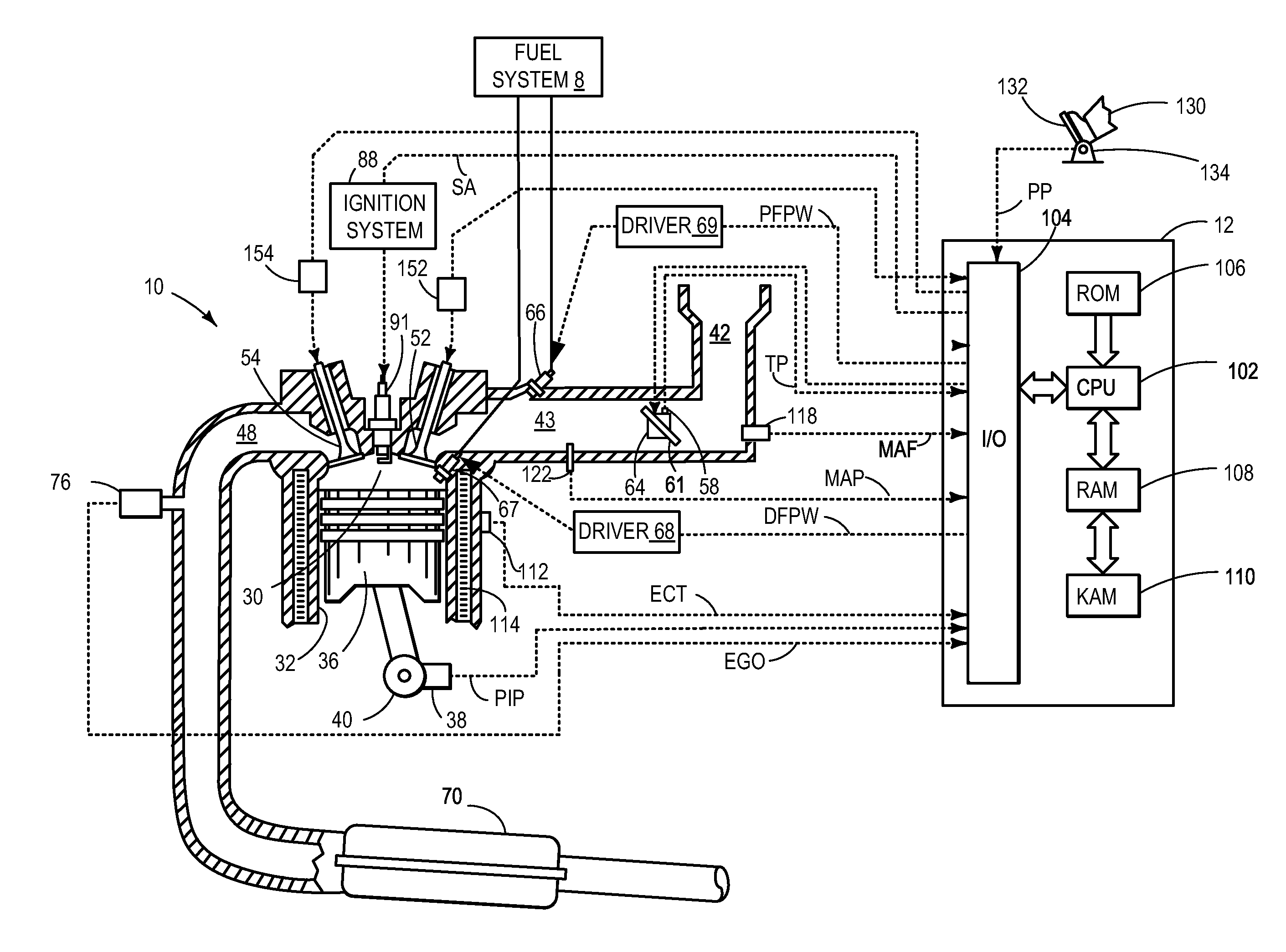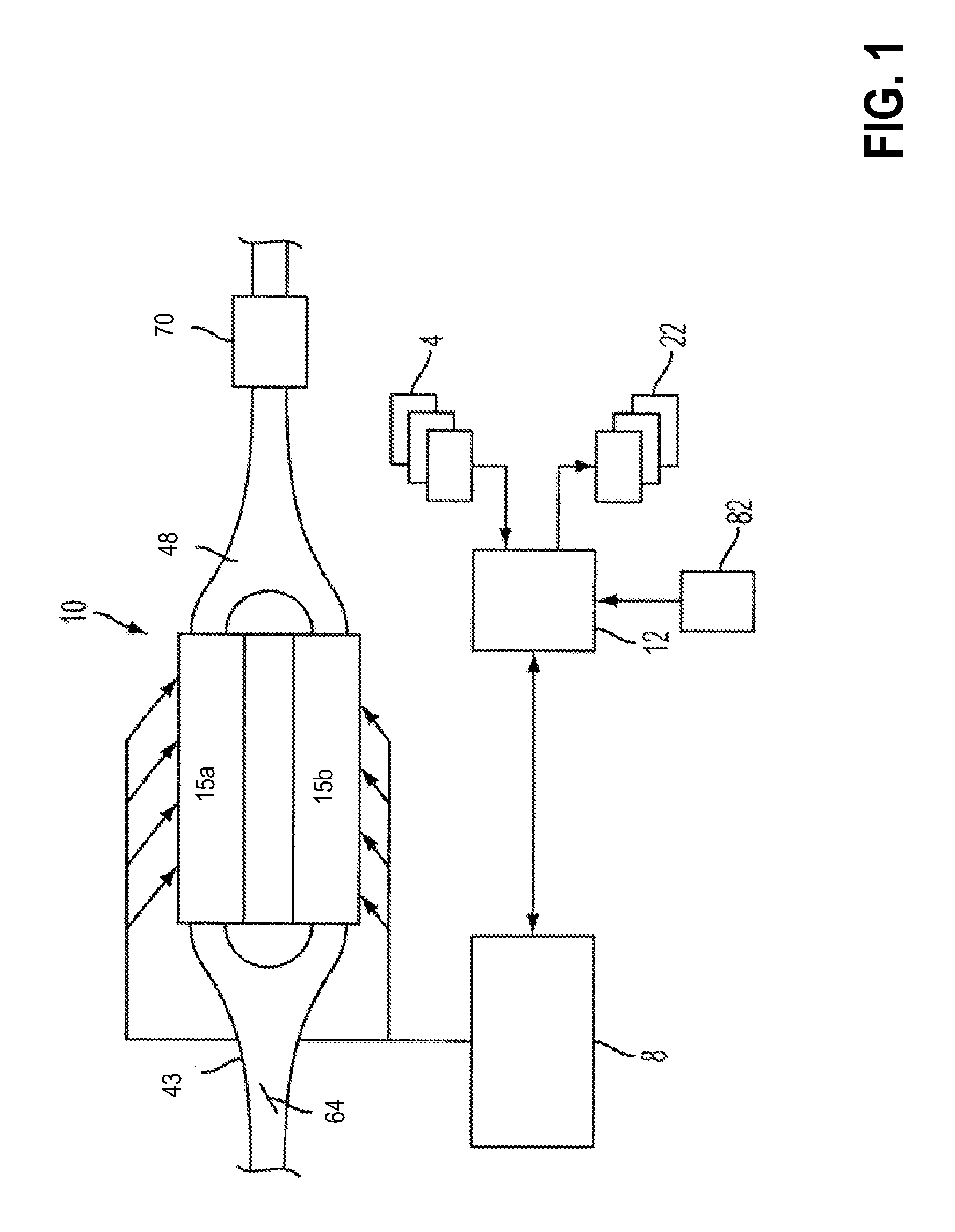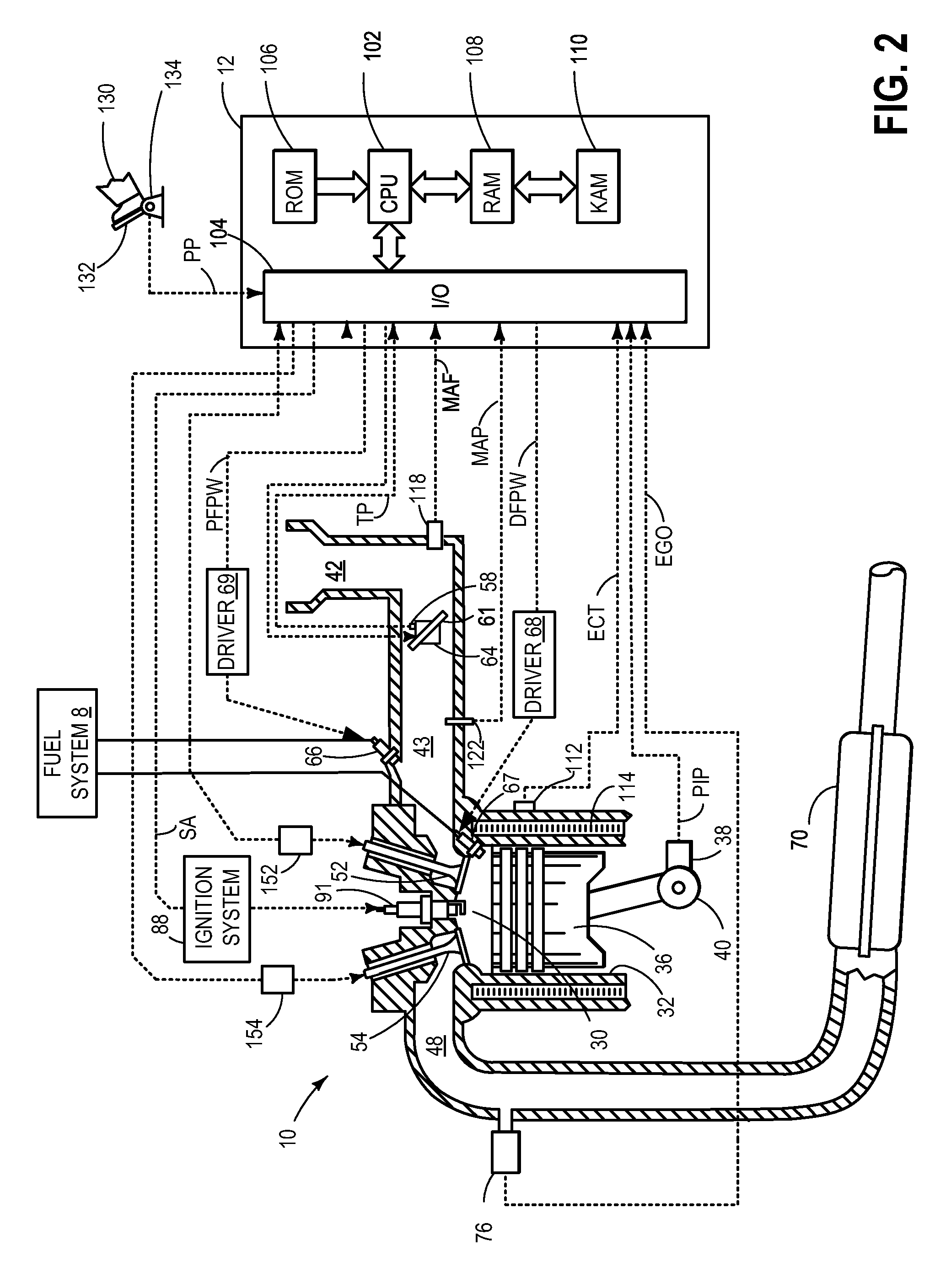Method of fuel injection for a variable displacement engine
a variable displacement, fuel injection technology, applied in the direction of machines/engines, electric control, ignition automatic control, etc., can solve the problems of partial burn, vde engine configuration with only port fuel injection system may have problems during transition between vde, emissions and drivability issues may increase, etc., to achieve a wide range of engine configurations, reduce displacement, and increase fuel economy
- Summary
- Abstract
- Description
- Claims
- Application Information
AI Technical Summary
Benefits of technology
Problems solved by technology
Method used
Image
Examples
Embodiment Construction
[0017]Methods and systems are described for adjusting fuel injection profiles in selectively deactivatable cylinders of a variable displacement engine (VDE), such as the engine system shown in FIG. 1. Each cylinder in the VDE may be configured with a port injector and a direct injector as shown in FIG. 2. A controller may be configured to transition engine operation from VDE mode to non-VDE mode, or vice versa, based on operating conditions (FIG. 3). A fuel injection profile in a cylinder selected for deactivation may be adjusted such that an intake port fuel puddle is consumed before the cylinder is deactivated and a fresh air charge is trapped (FIG. 4). Additionally, the fuel injection profile may be adjusted in a reactivated cylinder to allow an accumulation of the intake port fuel puddle before port injection is ramped up (FIGS. 5-6). Various operating parameters may be adjusted (FIG. 7), as fuel injection profiles are modified based on cylinder deactivation and reactivation, to...
PUM
 Login to View More
Login to View More Abstract
Description
Claims
Application Information
 Login to View More
Login to View More - R&D
- Intellectual Property
- Life Sciences
- Materials
- Tech Scout
- Unparalleled Data Quality
- Higher Quality Content
- 60% Fewer Hallucinations
Browse by: Latest US Patents, China's latest patents, Technical Efficacy Thesaurus, Application Domain, Technology Topic, Popular Technical Reports.
© 2025 PatSnap. All rights reserved.Legal|Privacy policy|Modern Slavery Act Transparency Statement|Sitemap|About US| Contact US: help@patsnap.com



